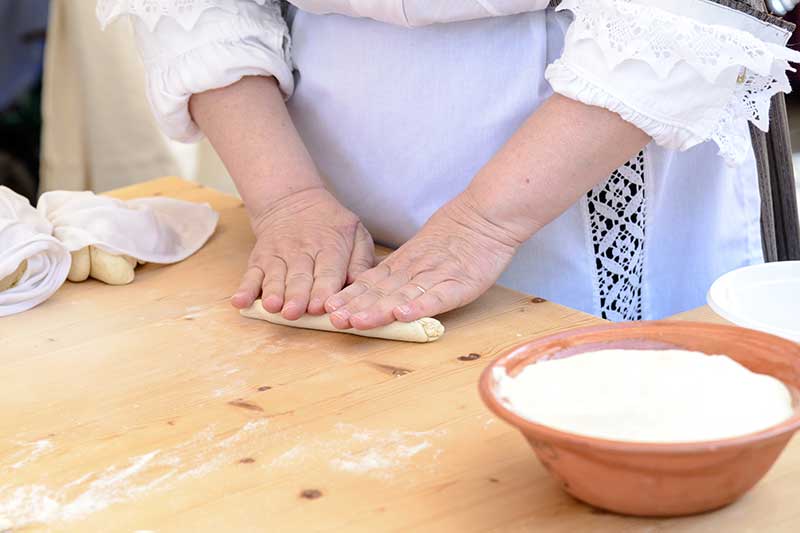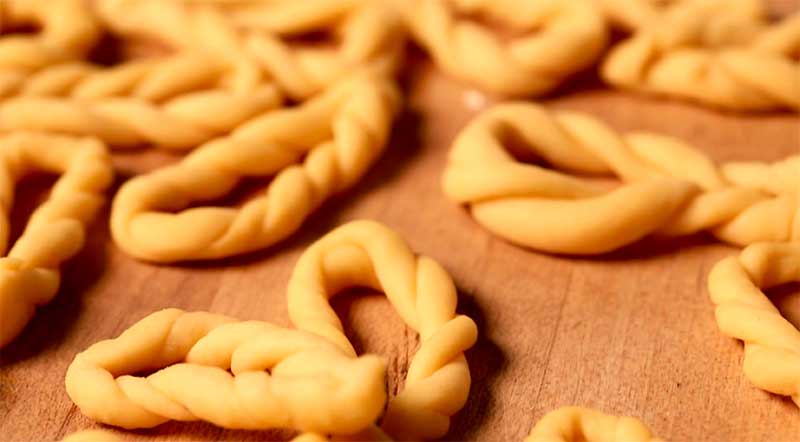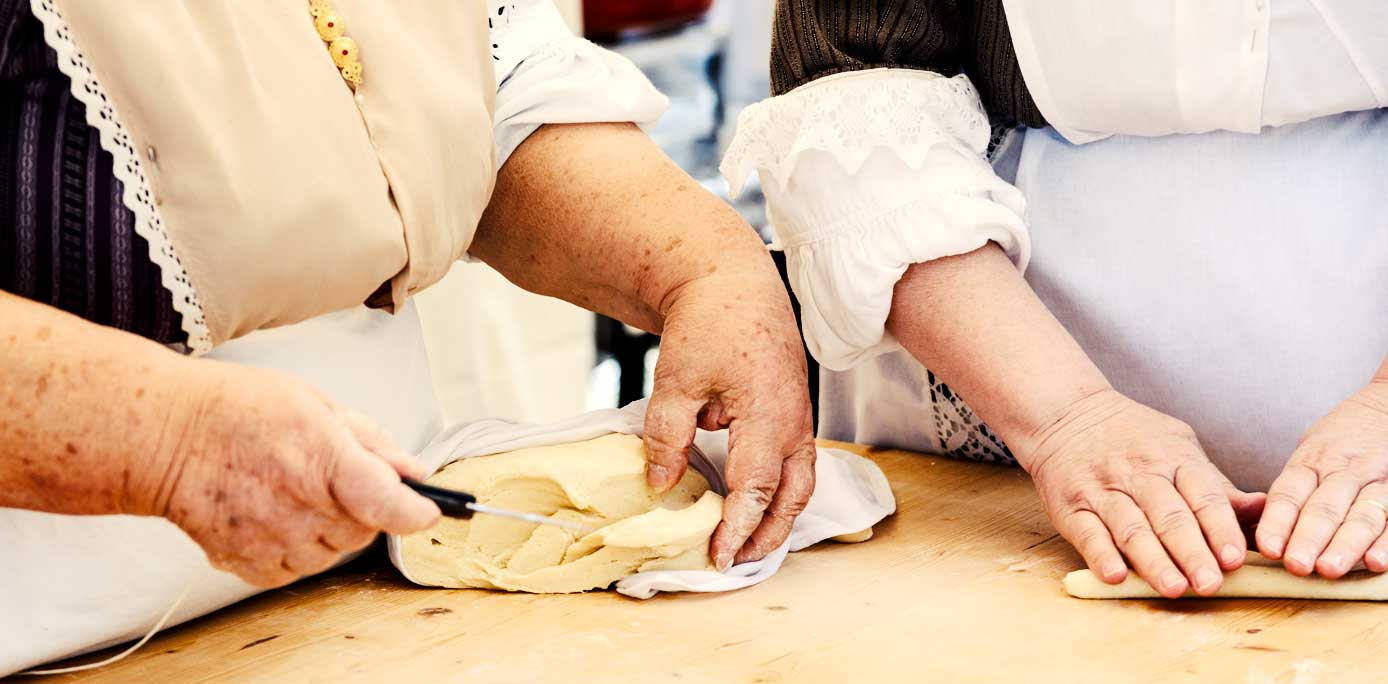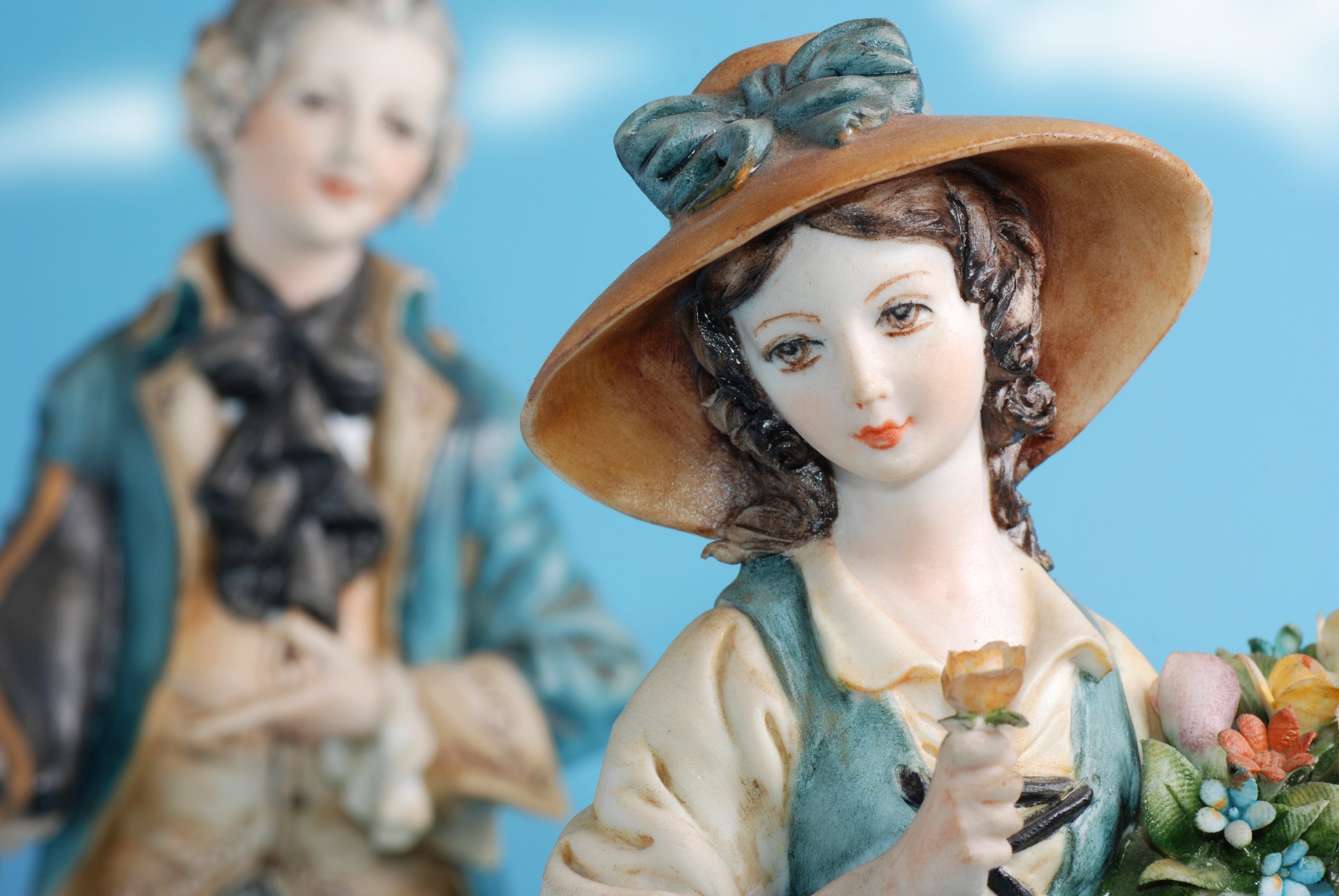Sardinia, cradle of history and special traditions, holds within also plenty of culinary secrets. Let’s ideally travel to the west of the island. We are in the enchanting area of Marmilla, a small region at the very edges of the Campidano, where soft, rolling hills dominate the landscape, punctuated here and there by typical giare, basalt plateaux covered in Mediterranean shrub and cork forests.
Here, in the traditional village of Morgongiori (home to 800) in the province of Oristano, known especially for its tapestry and artistic rug making industry, a small group of women holds — quite literally — in their hands the secrets to make the lorighittas, an old fashioned variety of pasta, beautifully weaved by hand.

Finally, the lorighittas is closed like a ring © Oleksii Lukin | Dreamstime.com
A bit of history first.
According to historians, the first written mention of lorighittas dates back to the 16th century and, more precisely, to an official document redacted for the King of Spain whose possessions at the time included the island of Sardinia. In it, a peculiar variety of pasta, a sort of pleat-shaped like a ring is described: it was the lorighittas. Lorighittas used to be made specifically for All Saints’ Day: local women would gather together and prepare them by mixing water and durum wheat semolina (locally known as trigu murru or trigu arrubiu), shaping them like little garlands and placing them to dry in large wicker baskets , arranged in beautiful lace-like patterns. As it always happens in the best of rural traditions, the time when lorighittas dried wouldn’t go wasted, but used to prepare their sauce, made with a base of tomatoes and saffron, enriched with free range cockerel meat. Wealthier families would use pork or wild boar instead, for an even richer taste. Modern takes on their sauce involve the use of wild game, mushrooms, asparagus and shellfish. Oh, and of course, the dish was — and still is — topped with lashings of grated pecorino.

When it comes to the making and shaping of lorighittas, things haven’t changed much with time
But when it comes to the making and shaping of lorighittas, things haven’t changed much with time. Indeed, they are still made exclusively by hand and believe us when we say there is a lot of skills involved: anyone who has grown up with a grandmother making cappelletti or tortellini by hand knows how fast and elegantly their hands could move when twisting and turning dough around their fingers. Well, lorighittas making involves the same level of dexterity. But even before getting to that stage, there is a lot of work to do. The dough needs to be very soft and malleable to be shaped as it needs and, to obtain it, salted water needs to be added slowly, little by little to the flour, through a process that can take up the best part of half an hour.
But lorighittas are not only special and amazing for the way they are made and for the skills needed to make them: they are a type of pasta that, traditionally, only women should produce and this particular is rooted in the old fashioned rural subdivision of tasks, typical in small villages not only of Sardinia, but of the whole of Italy’s countryside. At the times of our grandparents, the men would usually spend their days in the fields, while the women would take care of food preparation, and that’s why lorighittas used to be a women’s thing. But in Morgongiori, it was especially the younger ones taking care of it, hence the traditional idea that lorighittas were the pasta of unmarried girls.

Thin strands of dough are delicately weaved together © Oleksii Lukin | Dreamstime.com
And what about their name?
Well, as well explained in an interesting article by La Cucina Italiana (on which I am basing my knowledge of this amazing variety of pasta), there is more than one theory. Some say it is named after traditional earrings worn in the past by Sardinian women and that the word lorigas means literally “circle,” to recall their shape. Others say the word is associated to the anatomy of lambs and kids, while other still mention lorighittas’ resemblance with the iron circles attached to rural homes, used to tie horses and calves to them. The Fondazione Slow Food, on the other hand, tells us their name means, quite simply, little ears in local dialect.

The dough to make lorighittas is made with semolina flour and salted water © Patrizio Martorana | Dreamstime.com
Today, lorighittas are a well protected and beloved treasure of Sardinia. They keep on being hand produced by local women, and some fresh pasta shops also make them. Since 2006, Morgongiori’s town council has been implementing an EU-financed project called Asso Lori, which aims at protecting the traditional methods used to make lorighittas and supporting local producers.
Lorighittas remain little known outside of Sardinia and their own little nest of beauty, Morgongiori, yet their popularity has been rising, also thanks to the interest of more and more local chefs and restaurateurs, who have introduced them into their menus. A festival entirely dedicated to them is held in Morgongiori on the first Sunday of August every year: a great occasion to taste them and to see how they are made. And they are so good that, once upon a time, there was even a legend, that of Maria pungi pungi, told to children lest they ate to many lorighittas and got sick: if they gorged on them, Maria the witch would arrive and puncture their belly with a skewer to let the pasta out!
In case you’d like to make them, there are a plethora of tutorials online showing you the basics. In alternative: book a ticket to Italy, pronto!
































